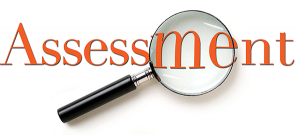Incorporating Evaluability Assessment into Church Consulting
by Certified Church Consultant, Dr. A. Christson Adedoyin, MSW, MATS, PhD.
Issues That Could Arise While Conducting an Evaluability Assessment in Church Settings
In the field of evaluability assessment, Fitzpatrick, Sanders, and Worthen (2004) posited that evaluability assessment should precede formative, or summative evaluations. There is no doubt that evaluability assessment is good intentioned and cost-effective as it offers remedial intervention to programs that are not running as planned. In this month’s blog posting I will highlight at least five issues that could arise while conducting evaluability assessment in Church Consulting.
 First, evaluability assessment can highlight the breakdown of communication between stakeholders and evaluators (in our context, between the congregants, laity and the pastorate, clergy). As nice stated by Fitzpatrick and colleagues programs can only be considered “evaluable” (p.182) when there is flow of communication between the stakeholders and evaluators. It is therefore, possible that issues of communication gaps and breakdown can be identified and immediately remedied during evaluability assessment.
First, evaluability assessment can highlight the breakdown of communication between stakeholders and evaluators (in our context, between the congregants, laity and the pastorate, clergy). As nice stated by Fitzpatrick and colleagues programs can only be considered “evaluable” (p.182) when there is flow of communication between the stakeholders and evaluators. It is therefore, possible that issues of communication gaps and breakdown can be identified and immediately remedied during evaluability assessment.
Second, Fitzpatrick, Sanders, and Worthen (2004) mentioned that evaluability assessment bridges the gap between “rhetoric and reality” (p.182). Practically speaking from what the Church is teaching and how the congregants are living the Word. As the scripture says “Do not deceive yourselves by just listening to his word; instead, put it into practice” (James 1: 22 GNT) It is therefore, very possible to identify competing realities, and conflicting models of a Church program (discipleship, evangelism, missions, worship, etc) from the various key congregants of a program through a thorough evaluability assessment. Issues that can arise in this second point include the question of whose reality to evaluate? Should it be the reality of the Church members, those of the pastorate or church leadership, or the reality of outside beneficiaries of the program to mention but a few? Therefore, an evaluability assessment can raise and identify the conflicting realities, and thus provide consensus through a situational analysis to redesign the Church logic model or program theory of change altogether.
Third, using the Wholey and colleagues evaluability checklist (as cited by Fitzpatrick, Sanders, and Worthen 2004) it is also instructive to know that issues of the legality of conducting a Church program evaluation on a program can also arise. For instance during the assessment and data collection aspect of an evaluability assessment the Church Consultant may be legally constrained to conduct a program or consulting evaluation, and this issue may stop the entire consulting or evaluation process. A good example will be if no institutional review board (IRB) approval was granted to begin a consulting or program intervention with vulnerable groups in the Church setting such as abused children, elder population, under-served communities, under aged children, even or people who are serving a prison term, especially in the context of local and foreign missionary endeavors.
The fourth consideration of an issue that may arise during the evaluability assessment is what Fitzpatrick, Sanders, and Worthen (2004) termed the discovery of “nebulous or unrealistic goals and objectives” (p. 182). In this vein evaluability assessment may reveal that the goals and objectives may not follow the SMART model of setting Church program goals and objectives. For example, a program goal may be overly ambitious. An example is to win all the souls of the unreached people in a community, or to totally eradicate poverty in a poor neighborhood. It may be wiser to instead state a goal that seeks to either win specific number of souls of unreached people, or to reduce by certain, and measurable percentage the number of people dependent on government assistance through a job preparation, or entrepreneurial training intervention.
Five, the evaluability assessment could also raise the red-flag of whether or not the recommendations of the evaluation will be used or not for the betterment of the Church program. For instance Fitzpatrick, Sanders, and Worthen (2004) cautiously require that evaluators or Church Consultants should have guarantees, or assurances from primary stakeholders (Church members, deacons, elders and other leaders) that evaluation and consulting data will be taken into consideration in subsequent decision-making processes. This issue is very important because primary stakeholders may ignore, or discountenance the importance of historical, cultural or socio-economic disadvantages that may have perennially assailed program beneficiaries. In addition, the issues of appropriateness of data to be collected, and the method to use to collect the data (quantitative or qualitative or even mixed methods) could arise during the evaluability assessment phase.
Overall the aforementioned points are issues that could arise during the evaluability assessment of a Church or Christian non-profit organization program. The advantage of the early identification of these issues during evaluability assessment is that they can be quickly remedied. Such remediation can also motivate the overall redesign of the program. This will definitely make it a win-win situation for all involved in the program within the spectrum of stakeholders such as church members, deacons, elders and other ecclesiastical leaders.
Reference
Fitzpatrick, J.L., Sanders, J.R., & Worthen, B.R. (2004). Program Evaluation: Alternative Approaches and Practical Guidelines (3rd ed.). Boston: Pearson.


